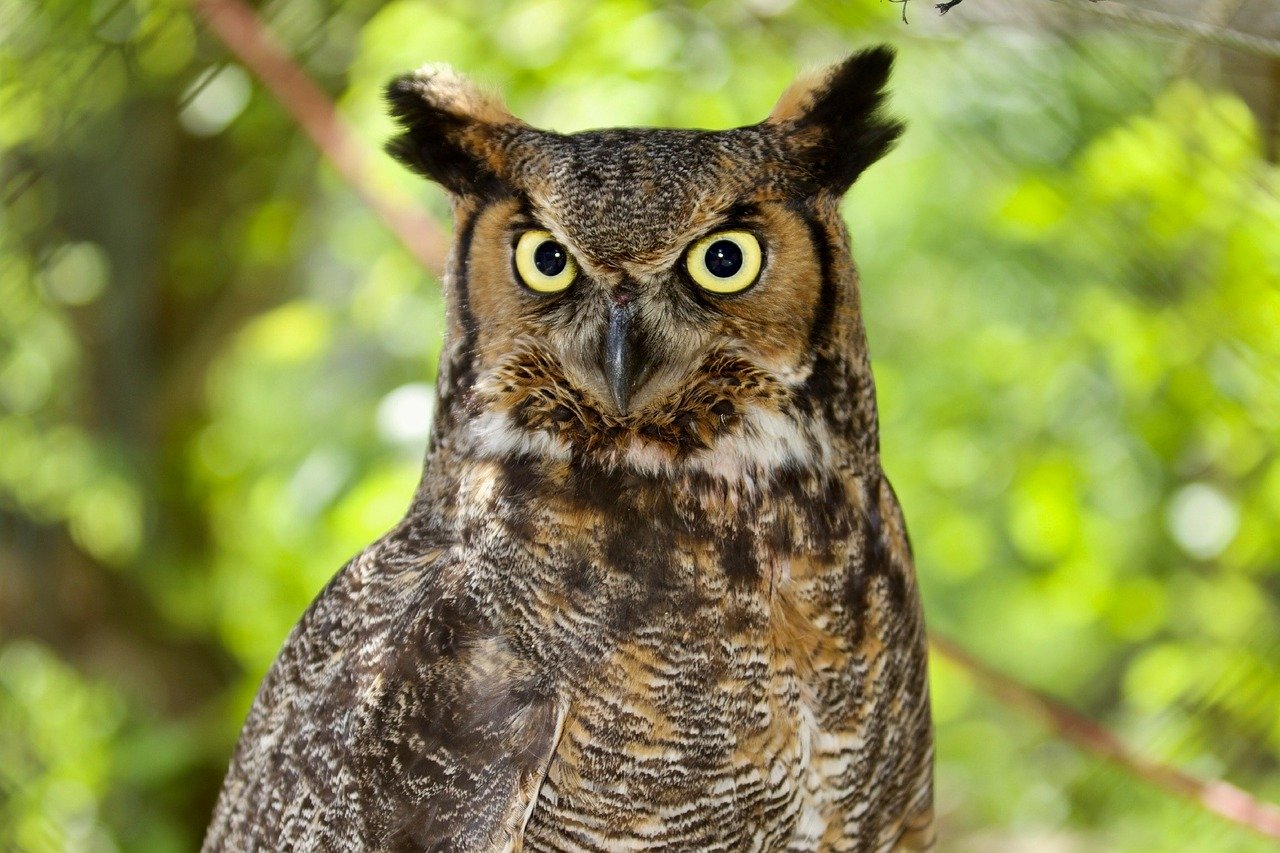Currently, the Hutchings Museum is studying a group of Great Horned Owls nesting behind the green barn on the east side of the property.
The great horned owl ( also known as the tiger owl) is one of the most adaptable bird species in terms of habitat. They live in Northern and South America in environments that can range from swamps to deserts. Their name comes from the tufts of feathers that stick up off their head resembling horns. Great horned owls nest in barns, tree trunks, and abandoned nests.
The great horned owl is a stealthy owl, using its camouflage to hunt at night and to roost safely in trees during the day. They have a large diet that ranges from small rodents to raccoons and other birds of prey. They are ambush hunters, swooping down on their prey, or walking on the ground to find smaller rodents. The great horn owl is also known to have hunted cats and dogs. These owls help to regulate many species from over infestation.
The great horned owl often hunts at night making them hard to spot. The owls are often hard to see but can be heard with their small soft hoot like sound. Their call sounds low, smooth, and loud. The female has a higher sounding pitch than the males. Calling usually occurs around midnight and can last until dawn.
A large amount of great horned owls are killed every year from flying into buildings, cars, and being hunted by humans for sport. The secondary killer of the great horned owl is pest control that enters their system when they eat bugs and small rodents that have been affected by the poison. In the 20th century, the state of Michigan put the great horned owl on their endangered species list after they were hunted for prize money and sport. Hunting and poaching of the great horned owl still occur on a small scale but is illegal in many countries.



